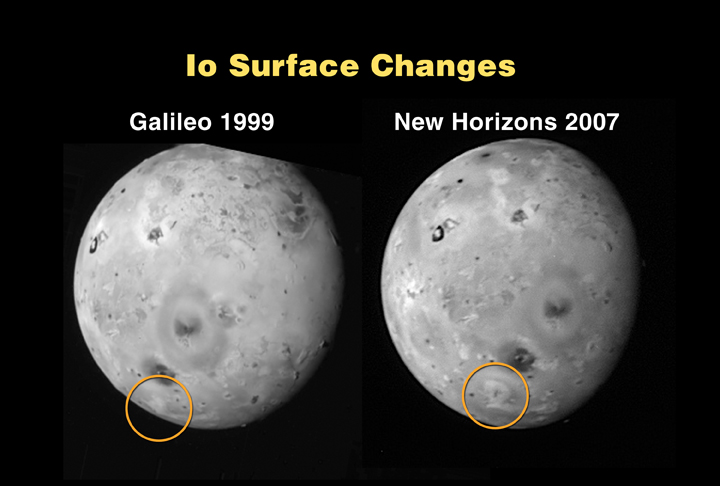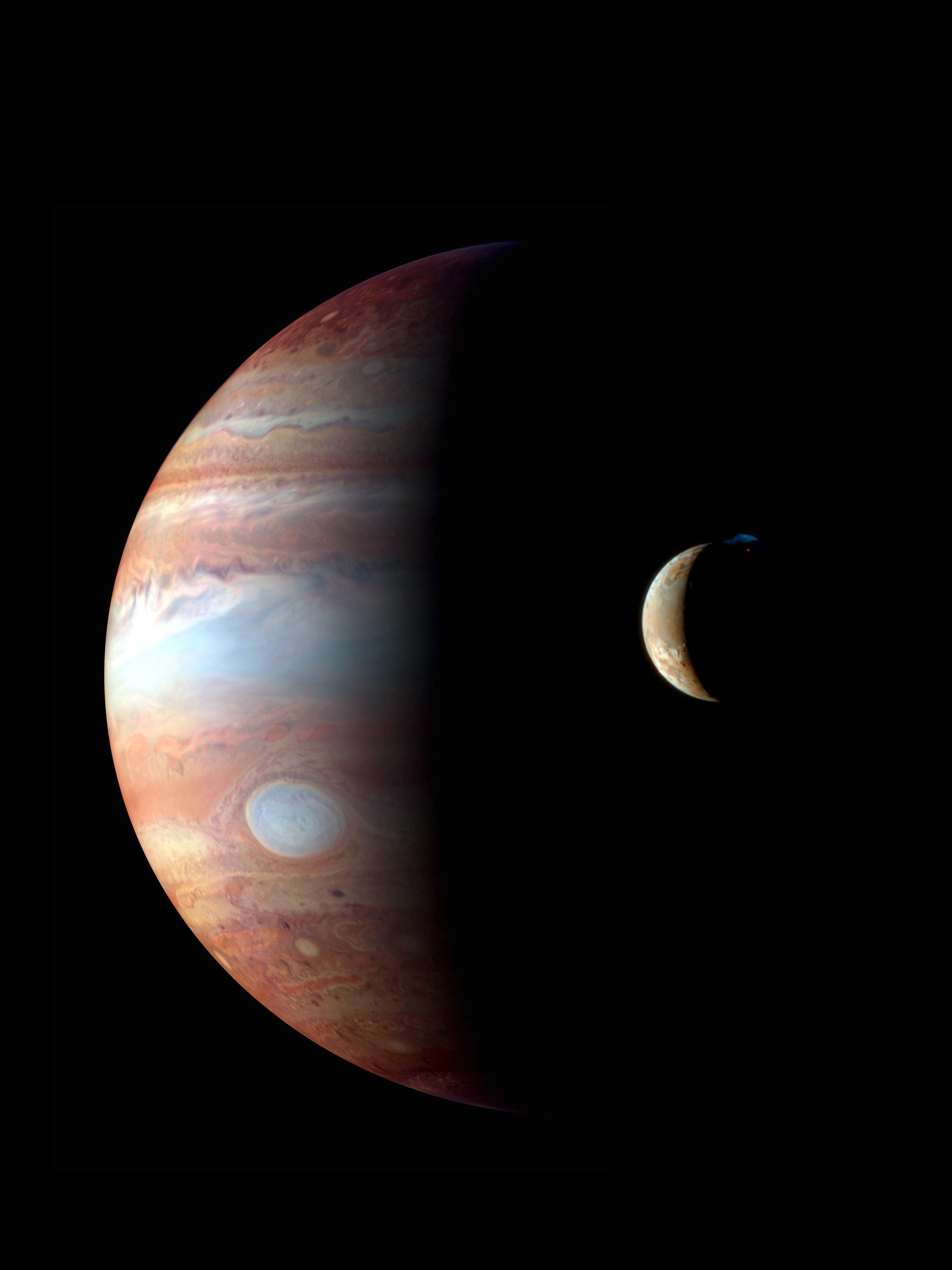Activity Involving Jupiter
On February 28, 2007, New Horizons passed
Jupiter using the planet’s gravitational pull to assist and speed up its
trajectory on its journey to Pluto, trimming three years off of the initial
journey. Taking only thirteen months to
reach Jupiter, New Horizons is the fastest spacecraft to ever be launched. It is not the first space craft to visit
Jupiter, in fact seven spacecrafts have previously visited the Jovian system;
however, New Horizons provided us with images and information that has never
been seen before.


This is a montage of New Horizons images of Jupiter and its volcanic moon Io, taken during the spacecraft’s Jupiter flyby in early 2007. The Jupiter image is an infrared color composite taken by the spacecraft’s near-infrared imaging spectrometer, the Linear Etalon Imaging Spectral Array (LEISA) at 1:40 UT on Feb. 28, 2007. The infrared wavelengths used (red: 1.59 µm, green: 1.94 µm, blue: 1.85 µm) highlight variations in the altitude of the Jovian cloud tops, with blue denoting high-altitude clouds and hazes, and red indicating deeper clouds. The prominent bluish-white oval is the Great Red Spot. The observation was made at a solar phase angle of 75 degrees but has been projected onto a crescent to remove distortion caused by Jupiter’s rotation during the scan. The Io image, taken at 00:25 UT on March 1st 2007, is an approximately true-color composite taken by the panchromatic Long-Range Reconnaissance Imager (LORRI), with color information provided by the 0.5 µm (“blue”) and 0.9 µm (“methane”) channels of the Multispectral Visible Imaging Camera (MVIC). The image shows a major eruption in progress on Io’s night side, at the northern volcano Tvashtar. Incandescent lava glows red beneath a 330-kilometer high volcanic plume, whose uppermost portions are illuminated by sunlight. The plume appears blue due to scattering of light by small particles in the plume. This montage appears on the cover of the Oct. 12, 2007 issue of Science magazine. Credit: NASA/JHU/APL.
On its flyby
of the gas giant, New Horizons focused its investigation of Jupiter’s moons on
Io. New Horizons spied eleven different
volcanic eruptions, three of which had never been seen before and a two-hundred
mile high eruption spewing from the volcano Tvashtar, further proving that Io
is in fact the most geologically active body in the solar system. Not only this but New Horizons also spotted
infrared light from at least thirty-six volcanoes and measured lava
temperatures of up to 1,900 degrees Fahrenheit. The images caught by New
Horizons of Io also showed more than 20 changes to the surface since last
visited by a spacecraft in 2001. As New
Horizons continued down Jupiter’s magnetotail, its particle detectors looked
specifically at the path of charges particles that flow beyond the planet,
providing evidence that much of this material comes from Io’s volcanic
eruptions. From much of these
observations, New Horizons scientists are now exploring how Io’s volcanic gases
are ionized, trapped and energized by Jupiter’s magnetic field and later
ejected from the system. In addition to
all of this, New Horizons was able to capture the clearest footage of the
Jovian ring system thus far. In them,
clumps of debris arcing irregularly out of the rings were spotted, indicating a
recent possible impact inside the rings.